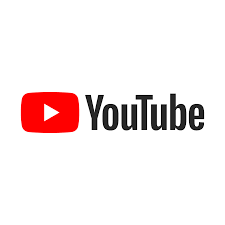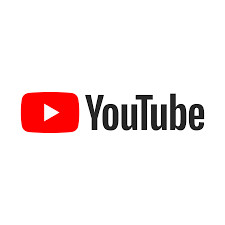The main problems encountered with Youtube monetization, YouTube will start the monetization of shorts
YouTube will start the monetization of shorts
Freeing yourself from Youtube is to be able to set your rules, and regain control over your content, your audience and its monetization.
Problems with monetization on YouTube and alternatives for content creators.
If you are a creator of content on YouTube and your commercial model is to monetize videos with advertising, you have certainly heard in recent years the many debates about the rules of monetization or even heard the term “demonetization”. Advertising monetization on YouTube asks many questions, and for good reason, this is one of the main remuneration models for creators (others being product placement, remunerated partnerships or premium subscriptions but we will focus on advertising monetization in this article).
We will first see the rules around advertising monetization, then the various problems regularly pointed out by creators about this remuneration system. Finally, we will see the alternatives for creators, videographers and musicians to develop their remuneration.

How does monetization on YouTube work and what are the rules ?
Not everyone can monetize their content with advertising on YouTube. Indeed, it is necessary to fulfill a certain number of conditions to be part of the YouTube Partner Program:
- Having eligible content (having all broadcasting rights, including music, certain types of content such as videos targeting those under 13 or containing certain sensitive themes or subjects etc.))
- Live in an eligible country or region.
- Have more than 4,000 hours of viewing in the last 12 months.
- Have more than 1,000 subscribers.
You will also need a valid adsense account. Then, youtube will validate your request or not, and even if you meet these YouTube criteria does not systematically validate the accounts because it also analyzes the content of your channel. For this YouTube uses in particular an automatic word detection system, by scanning your videos can understand the theme of your channel. If your content has too many insults or insults, or many words around the lexical fields of sex, weapons etc … then they can decide not to validate your account.
Regarding the income potential, we had made an article on the income of the youtubers a few years ago which remains topical. In general, the following information must be kept in mind:
- YouTube takes 45% of advertising revenues;
- If users pass (“skip”) the pubs, the income is less or even zero;
- Everything is automated: advertisers, the number of pubs, their frequency, the CPM … Creators have little control over the parameters of the campaigns;
- Some video themes pay more, seasonality also plays;
- On average we can remember that 1000 views = € 1 donated to the creator (before taxes, etc.);
To summarize, monetization on YouTube is not for everyone, you must have content approved by YouTube, make a significant number of views, and obviously make several million views / month to be able to live.
Furthermore, it is a very powerful automated advertising management but it offers little control to creators who are subjected to campaigns (and have no right to look at advertisers or possibility of advertising advertisements).

What are the main problems with Youtube monetization ?
A certain number of concerns arise around Youtube monetization and are often highlighted by video creators:
Demonetization
The contents are often and easily demonetized. As seen before, depending on the theme, certain content can be automatically demonetized by YouTube. Indeed, in 2017 then 2019, many important advertisers (such as Nestle, Pepsico or Mac Donalds) decided to boycott the platform following concerns to be associated with supremacistic or pornographic content. In another register, many artists or content producers have complained in recent years following the illegal use of their content (music or film extracts for example) by creators who monetized their videos. From then on Google, the parent company of YouTube decided to strengthen security on content and has become increasingly strict by immediately demonetizing (and sometimes even by censorship) a large number of content.
A good number of creators point to several problems:
- Certain themes deemed sulfurous are automatically blocked (as soon as content offering debates for example around sexuality or abortion can never be monetized).
- Automatic filters that protect copy rights are sometimes too strict. For example, the musician and youtuber Rick Beato said that his whole video on the story of the rock guitar was blocked for using 10 seconds of live images from Randy Rhoads playing a guitar solo solo.
The policy of YouTube consisting in “blocking first and then discuss” penalizes many youtubers who see a large part of their income escape for reasons not always fair.
Little control over advertising campaigns
As we saw in the first part, the YouTube advertising monetization tool offers little control over the countryside. In particular, we can quote:
- It is not possible to choose advertisers, nor to do direct contracts to broadcast a specific campaign
- There is little flexibility in the configuration of potential campaigns. For example, you cannot choose the number of advertising cuts (which is done automatically, often depending on the length of your content). You cannot define a capping either, that is to say a maximum number of times or a user can see the same advertisement on your channel.
- The price of the CPM cannot be set by a creator. The CPM is the cost that an advertiser pays for 1000 views of his advertisement. This price is automatically calculated by the YouTube advertising algorithm as a function of many criteria. Unfortunately as a creator you cannot set rules concerning, for example by fixing a minimum CPM at € 10.
Income
YouTube takes an important part on income from advertising monetization: 45%. Aside if you are an important YouTube partner or a huge youtuber, this percentage is not negotiable.
A classic advertising management generally takes between 15 and 30% of advertising revenues. This significant income sharing for YouTube is often criticized by creators.
Limitation on the collection of advertising data
The data information on your audience provided by YouTube is relatively thin. First of all, you don’t know who is really your audience and these are data that has a lot of value. Imagine that a creator is able to provide an advertiser (with the consent of your audience) the list of those who watched advertising until the end or who clicked on advertising.
The most important data is kept by YouTube which does not share it. Use YouTube is to give up obtaining qualified data on your audience that could monetize much better from advertisers if you have them.
Opacity in the rules of monetization
Another point often criticized by youtubers is the dependence they have on YouTube. As we know, the algorithm of highlighting content often changes and no one really knows how it works. It is the same for the rules of monetization. The result for creators is a great uncertainty: will my content be demonetized? What will be my advertising revenue next month?
As we explained in this article, the Gafans have the power. They can decide to change their rules of the game overnight: close a YouTube channel, demonstrate a whole video or chain, censor content, distribute advertisers whose products you do not appreciate ..

What are the monetization alternatives for content creators ?
On YouTube, product placement or partnership with a brand can be rather remunerative. Generally the contract is done live between a youtuber and an advertiser, which prevents YouTube from affecting a commission. However, this requires that you already have a very large audience and an active community. And obviously, as everything happens on YouTube you will not be able to provide advanced data to your advertisers concerning your audience: for example who has seen the product placement (to be able to be contacted or re-cable then).
Merchandising consisting in selling derivative products is also a solution, but this implies that you can manage a shop separately with suppliers, after-sales service, inventory management etc … It is a real activity it will therefore be necessary dedicated resources to take care of it seriously.
Another alternative is to create its own diffusion streaming platform. Whether it is a video platform or even a mobile music or podcast application, the main thing is to control the platform as a whole:
- Check your content: no “strike”, no demonetization, no content from competitors next to yours
- Choose the monetization model: Netflix subscription, payment at the session, sponsorship … or a mixture of several models to diversify your income ! If you decide to continue with advertising, you can choose your advertisers, and negotiate much more remunerative contracts (and CPM).
- Get all the data from your users: viewing sessions, email addresses & more … you can value them much better with advertisers.
- Design your platform as you wish: your colors, your layout without being forced by YouTube.
- And as a bonus you can even create your own mobile applications, TV applications (Apple TV, Android TV, Amazon Fire TV, Roku, Samsung TV, etc.))
Freeing yourself from Youtube is to be able to set your rules, and regain control over your content, your audience and its monetization.
Please note: the idea here is not to leave YouTube quite the contrary. It’s a great promotion platform, to introduce your video content and find audiences. On the other hand, if you want to make content creation your job, then the creation of your own streaming platform will be necessary as a media of diffusion and main monetization.
At Okast, we offer a key-in-hand solution to create your own streaming platform to broadcast your video or audios content, or even its live streams. You have total control over your content and users (as well as all their data). And above all you can set up different models of monetization such as the Premium subscription or even sponsorship.
To find out more, contact [email protected]
YouTube will start the monetization of “shorts”


YouTube announced for the first time the new income sharing program, and has the potential to change the way the platform monetizes short video content.
From February 1ᵉʳ, the members of the Partner Partner Program, so people who already monetize their content, will be able to receive a share of advertising revenue on the Shorts flow.
People who create shorts can now apply for the partner program, hitherto reserved for long video formats.
To apply, the person must have at least 1000 subscribers and their channel has 10 million shorts viewed in 90 days. YouTube warns, people who create short contents will have to comply with all the conditions set up by the platform to hope to monetize their short videos.



